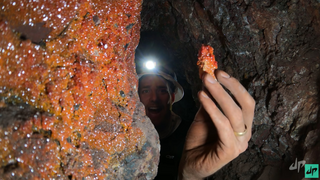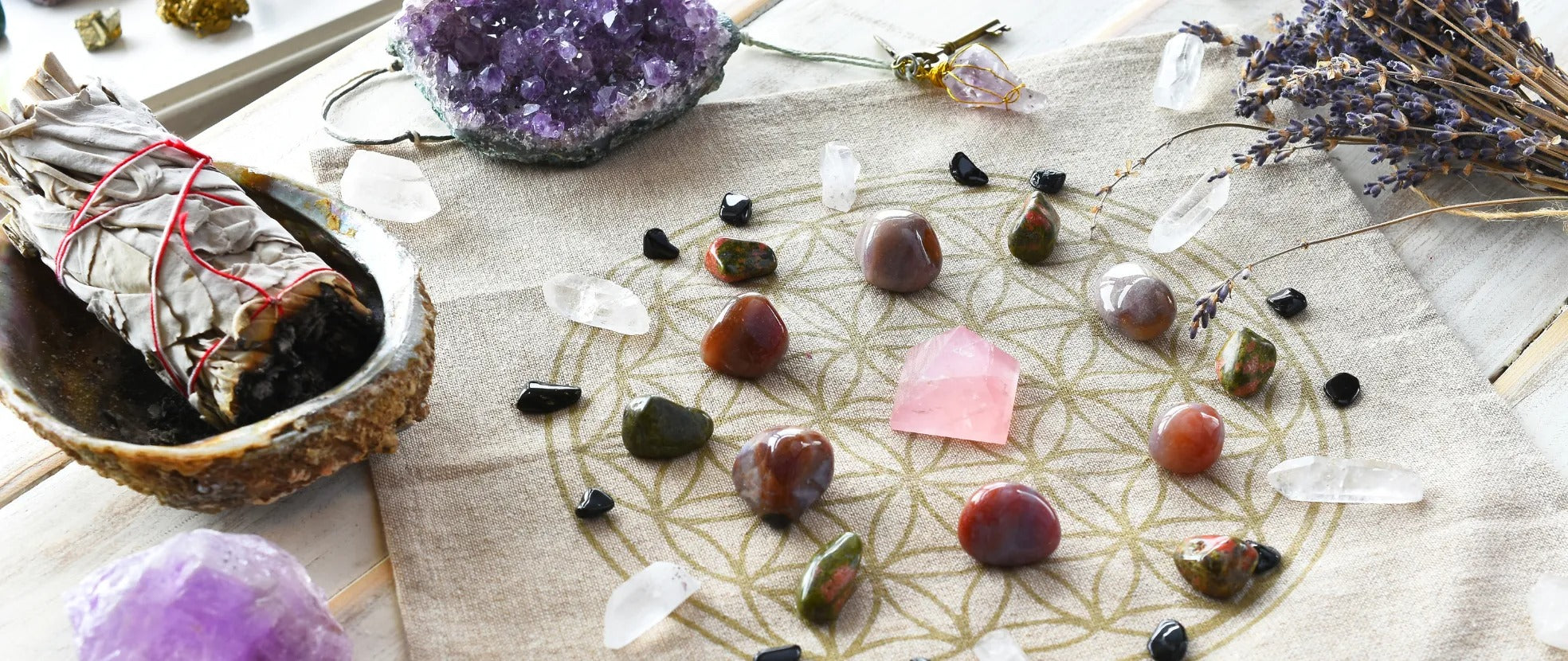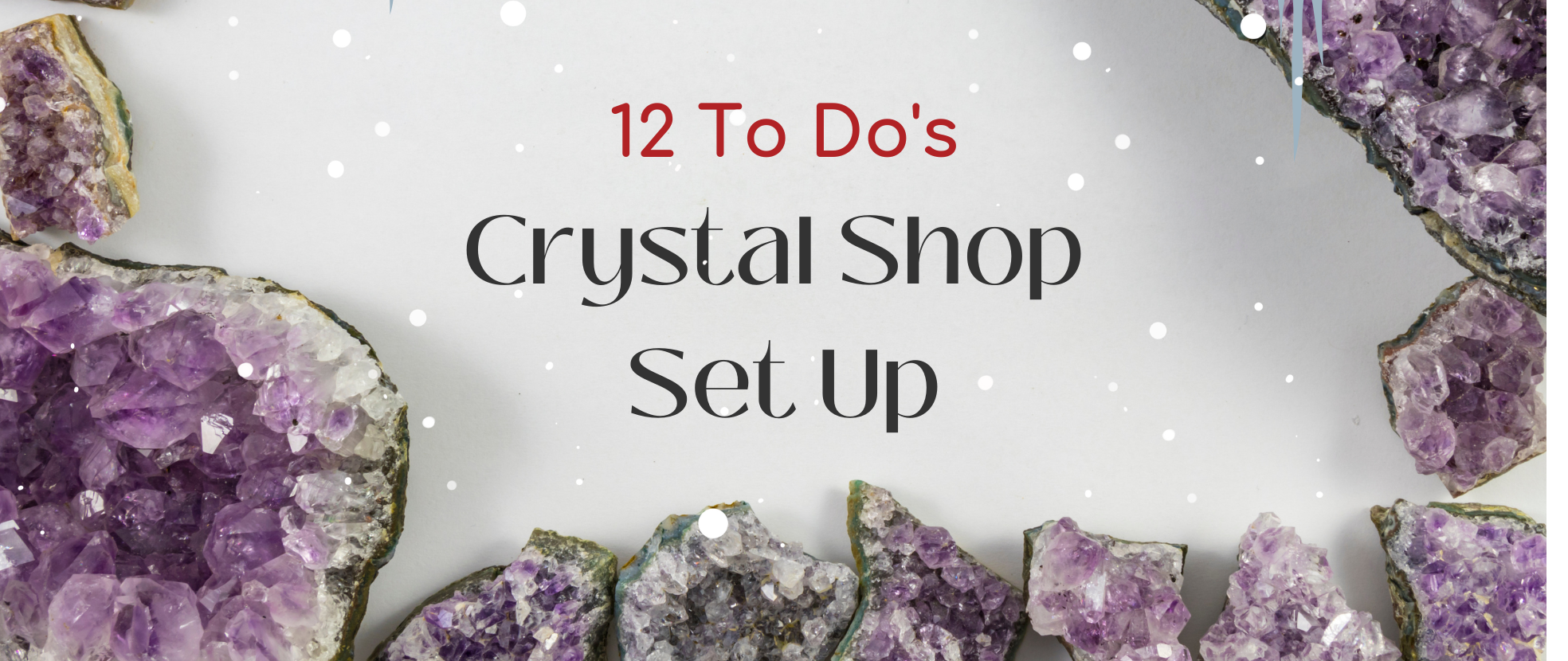So you've just decided to try rockhounding. And you're armed with the basic tools and safety equipment you need for your first rock hunting expedition.
But where are you going to find rocks worth collecting?
There's no one and only location to go scouring for rocks, gems, minerals, or fossils. After all, geological formations are not the same everywhere.
Regardless, wherever your rockhounding passion may take you, there are always ideal and interesting places to start with in any location.
And that's what you're going to find out in this blog!
Which Locations Are Rich in Great Rocks and Minerals?

You can come across different types of rocks and minerals wherever you go. However, not all locations are created equal; some spots are home to rare and beautiful finds while others? Not so much.
For instance, places like road cuts, beaches, river banks, mine tailings, and sites with newly overturned soil offer instant access to the finest rock specimens. Plus, they're almost always a car drive away. Perfect for when you don't have all day to go rock hunting.
What factors should you look for in a good rockhounding spot?
1. It is exposed.
A surface with exposed rock is always a good place for rock collecting. Exposed locations don't have marshes, grassy fields, vegetation, or dirt smothering them. They are found in places where erosion is frequent, such as river banks, beaches, and creek beds.
Erosion is the force that cuts the soil and the bedrock, resulting in the native rock to be exposed. It also transports rocks to different places.
2. ¦and freshly at that.
It's not enough that the rock is exposed ” it has to be freshly exposed and not covered with dirt and grass, too. A good rockhounding spot must have native rock that has not been subjected to weathering and elements namely sun, rain, and frost.
A freshly exposed rock that has not been in contact with elements makes for high quality specimens. They're not stained or discoloured and therefore, would look good in your collection.
Also, it's much simpler to retrieve a fresh specimen from the surface than it is to collect a weathered one with a rock hammer. And as a responsible rockhound, you'd want to collect rocks with little to no damage to the outcrop.
3. Rockhounding is permitted in the area.
Whether it's a public or private land, you need to make sure that collecting rocks and minerals in the location is allowed.
Contact the owner or caretaker of the land you're considering via phone or email before your visit. Many owners would usually allow rockhounding on their property if you ask their permission. Although some might decline, so be ready to politely accept a likely refusal.
Avoid collecting specimens from the land if you're not granted permission by the landowner.
4. Safety
Rockhounding is a fun and safe hobby for people of all ages. But some locations can be difficult to collect specimens from and it can pose harm to anyone.
Some areas may be prone to rock falls or landslides and may collapse on people when they're collecting rocks. Examples of these areas are mine shafts and the passages of a mine. Other rockhounding sites may have unsafe places to park or situated near blind turns.
If the area you've identified looks hazardous, best to stay cautious and look for another place that won't put you at risk of accidents.
Top Rockhounding Destinations for Beginner Rockhounds

1. Overturned soil
Freshly overturned soil in construction sites may contain cool rocks. And the best thing is you'll never know what treasures you'll find buried in there, which is good if you enjoy digging around and being surprised by random finds.
If you're near a farm field that's just been tilled, it may be worth asking the farmers if they'd be willing to have you look through their lot and do some rock collecting. There's a chance they'll allow you to do so, since fields with fewer rocks are nicer to plant in.
Of course, not all locations with freshly dug up soil will contain collectable rocks. But if you have access to these nearby open fields, it's always a good idea to have a look.
2. Riverbanks
Another location that's perfect for rock collecting are riverbanks. The shifting water levels and the running water delivers fresh new rocks, and that means fresh new finds for you each time you visit.
Go look for rocks along the sandbars and sandy banks on the bends of a river. In these areas, the current doesn't flow rapidly so the rocks gather there.
Experienced rockhounds advise going there after a rainstorm and when the water levels have receded. Due to weathering, expect to find rocks here that are smooth and rounded.
3. Mine tailings
Mine tailings are a treasure trove for rockhounds. Tailings consist of leftover rocks and minerals that have been separated from the valuable materials of an ore. These streams are found near old mines and quarries.
Since tailings are a by-product of mineral extraction, there's bound to be something to collect out of these rockhounding spots. These materials will vary from one site to another. And often, one location can have an abundance of assorted rocks and minerals worth collecting.
Unlike in an outcrop where you need to use tools to retrieve rocks and minerals from underneath, collecting materials from mine tailings is easier. This is because rocks in tailings have already been broken up. All you have to do is sift through the pile and pick the specimens that grab your attention.
4. Beaches
Turn a leisurely stroll on the beach into a rock collecting adventure. Because the waves constantly bring assorted materials to the shore, there's always something you can find on beaches whether you love collecting rocks or shells.
Also, anytime is a perfect time to go rockhounding on beaches. After a storm, you can expect lots of new materials on the shores brought by waves and currents. During low tide, you'll get a full view of the entire beach. It's a lot easier to pick rocks after a rain since the sand is compacted and the rocks are easy to spot without the loose sand around them.
5. Pay-to-dig sites
Want to go rockhounding without having to comb through the town for places where the activity is allowed? Hit the nearest pay-to-dig site. These sites are always accessible to rocks and minerals enthusiasts and you can always find high quality rocks there.
Pay-to-dig sites allow visitors to collect rocks at their mines, or they bring in materials from the mine and let rockhounds sift through them. There are quite a few pay-to-dig sites in Ontario which you can see here.
6. Outcrops
Mountainside, cliffs, and rocky hillsides covered in massive rocks are a good place to gather different types of rocks. Rock outcrops are located in remote areas, typically offering picturesque scenery. Perfect if you prefer a more natural setting.
The rocks and boulders at base of the outcrop often reveal the type of rock found above. Meaning, if you come across coloured or finely shaped crystals, there's possibly more of these specimens above. When collecting these crystals, make sure not to make more damage on the outcrop than necessary.
Popular Rock Collecting Sites To Visit in the USA
Screen grabbed from Dude Perfect YouTube channel
Keen to go rockhounding outside Canada? You'd be stoked to know there are plenty of places around the USA rich in different crystal species. In fact, the American comedy group Dude Perfect went on a treasure hunting adventure in search of the finest crystals in some of these destinations.
What are these places and what crystals can you find there? Below are some information we've dug out that might help if you wish to visit these sites:
1. Quartz crystals in Avant Fisher Mountain, Arkansas - Dubbed as one of the best quartz crystal locations in the world, the Avant Fisher Mountain in Arkansas is one of the most visited mine sites in the USA.
It has 4 operating locations. One of them is the Ocus Stanley Claim which is open to public quartz crystal digging. Ocus Stanley Claim has been operating since 1946 and is the oldest public dig in Arkansas.
The mine provides private guided experiences. You can also secure mining permits there for a certain fee. Visit Avant Fisher Mountain's Mine Your Own Crystal page for more information.
2. Vanadinite in Red Cloud Mine, Arizona - The Red Cloud Mine provides a memorable experience of digging and examining vanadinite and wulfenite specimens. The trip involves going inside the vanadinite underground mine situated 100 ft below the surface.
Inside, you'll see an entire vanadinite wall which lights up when shone with UV light. Their gem mining experience starts at USD $35 a day per person. Start planning your trip on Red Cloud Mine's trip planner page.
3. Yooperlites in Lake Superior Shore, Michigan - Discovered in 2017, Yooperlites are made of syenite (a coarse-grained igneous rock) that, at first glance, look like normal-looking gray stones. But when you shine a UV light on them, their fluorescent sodalites glow a bright orange or yellow. Each stone is unique and has varied patterns of sodalite.
These magnificent stones are mostly found along the eastern beaches of Lake Superior in Michigan. Unlike most rockhounding trips, finding Yooperlites requires specific tools and conditions. For one, you need to look for them at night to better appreciate their luminescence.
In terms of tools, you'll need a filtered UV flashlight, headlamp, and some glow sticks to guide your path.
Check out this post about Yooperlites by My Michigan Beach for more detailed instructions.
4. Topaz in Topaz Mountain, Utah - Topaz, the state gem of Utah, occurs as hard and transparent crystals in a wide array of colours. Specimens found at Topaz Mountain have a distinct amber colour, although they turn to white after frequent exposure to sunlight.
Topaz Mountain is a famed destination for hunting topazes. The place is so rich in topaz that if you search the slopes and washes on the south of the mountain you'll find tiny topaz crystals sparkling in the sunlight. Some specimens are even gem quality.
Visit their page to know more about topaz hunting.
Sources:
Rhea, M. (n.d.). Where to Find Rocks: The Best Places to Collect and Why. Rockhound Resource. Accessed at https://rockhoundresource.com/where-to-find-rocks-the-best-places-to-collect-and-why/
Andrew, A. (2019, July 2011). Rock Hunting for Beginners. ThoughtCo. Accessed at https://www.thoughtco.com/where-to-look-for-rocks-and-minerals-1440400
The Rockhounding Guide for Beginners. (n.d.). Rock and Mineral Planet. Accessed at https://rockandmineralplanet.com/all-about-rockhounding-what-is-rockhounding/
What Are Tailings? (n.d.). TAILINGS.INFO. Accessed at ??https://www.tailings.info/basics/tailings.htm
Bancroft Mineral Collecting. (n.d.). Bancroft Ontario. Accessed at https://www.bancroftontario.com/rock-collecting-sites/
Topaz Mountain. (n.d.). U.S. Department of the Interior Bureau of Land Management. Accessed at https://www.blm.gov/visit/topaz-mountain
Treasure Hunting Battle. [Dude Perfect] (2022, April 30). YouTube. Accessed at https://www.youtube.com/watch?v=pQuk3t2aeBo
Yooperlite: FIND Michigan's Mysterious Glowing Rocks (MAP). (n.d.). My Michigan Beach. Accessed at https://mymichiganbeach.com/yooperlite/
RED CLOUD MINE, LA PAZ COUNTY, ARIZONA, USA. (n.d.). Collector's Edge. Accessed at https://collectorsedge.com/legacy/red-cloud-mine-la-paz-county-arizona-usa/





